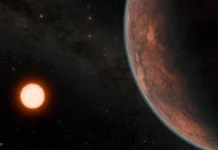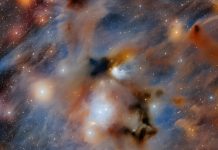
In a new study, researchers found new evidence that Mercury’s inner core is indeed solid.
They also found that the inner solid core has the same size as Earth’s inner core.
The research was conducted by scientists from NASA’s Goddard Space Flight Center in Greenbelt, Maryland.
Previous research has shown that Mercury and the Earth have metallic cores.
Although Mercury’s outer core is composed of liquid metal, scientists could only suppose its inner core is also solid.
In the current study, the team used several observations from the MESSENGER (Mercury Surface, Space Environment, GEochemistry and Ranging) mission to probe the interior of Mercury.
The MESSENGER spacecraft entered orbit around Mercury in March 2011.
It spent four years observing Mercury until it was deliberately brought down to the planet’s surface in April 2015.
The researchers focused on the planet’s spin and gravity. They used radio observations from MESSENGER to determine the gravitational anomalies and the location of its rotational pole.
In this way, they could understand the orientation of the planet.
The team put the data from MESSENGER into their computer program.
The program helped them to adjust parameters and figure out what the interior composition of Mercury must be like to match the way it spins and the way the spacecraft accelerated around it.
They found that for the best match, Mercury must have a large, solid inner core. They estimated that the solid, iron core is about 1,260 miles wide and makes up about half of Mercury’s entire core.
This is very different from Earth, whose solid core is about 1,500 miles across and only takes up a little more than a third of this planet’s entire core.
The new finding helps scientists understand Mercury better. Future work needs to explore how similar, and how different, the cores of the planets are.
This may help scientists learn how the solar system formed and how rocky planets change over time.
The leader of the study is Antonio Genova, currently an assistant professor at the Sapienza University of Rome.
The study is published in Geophysical Research Letters.
Copyright © 2019 Knowridge Science Report. All rights reserved.



